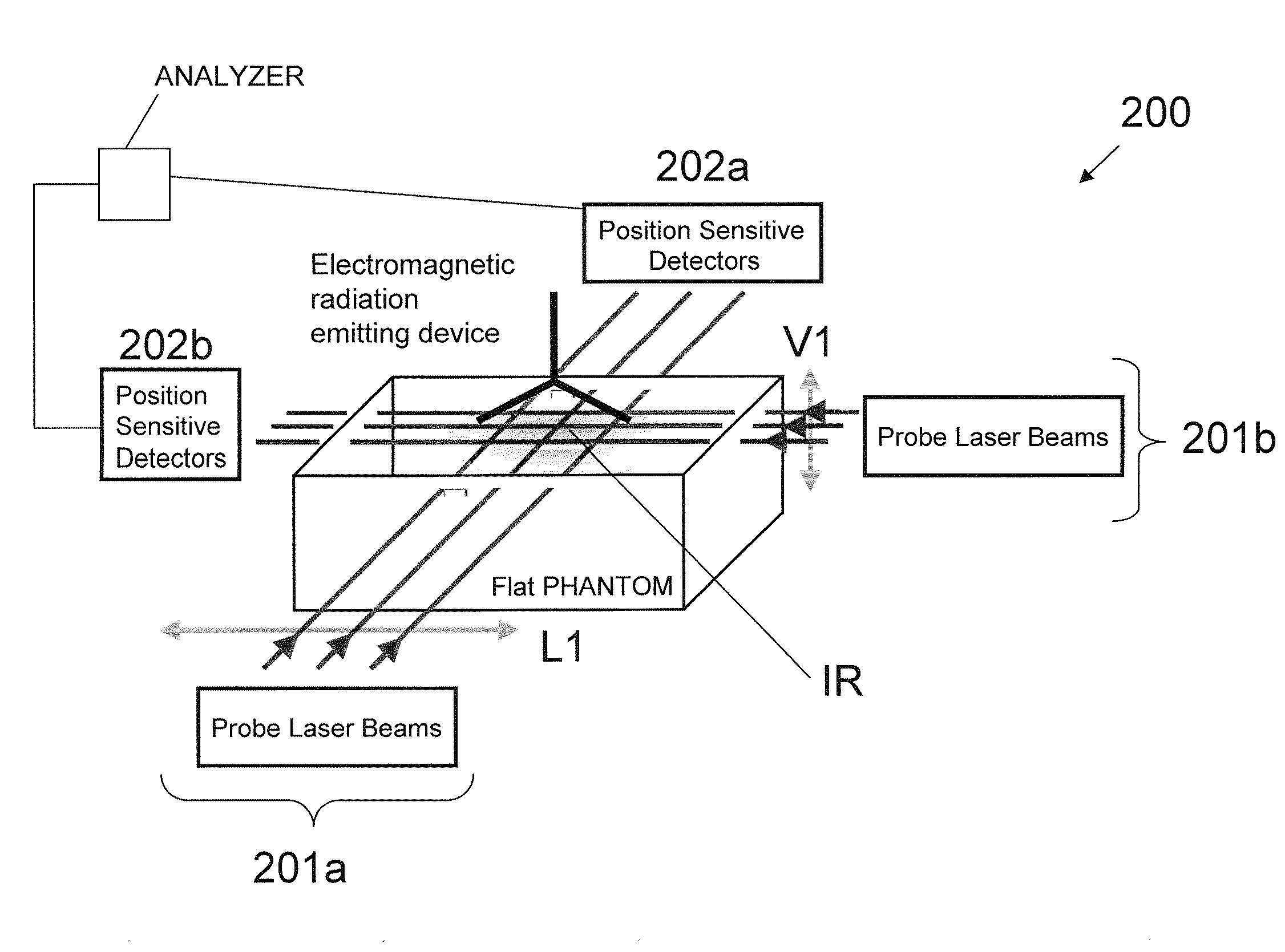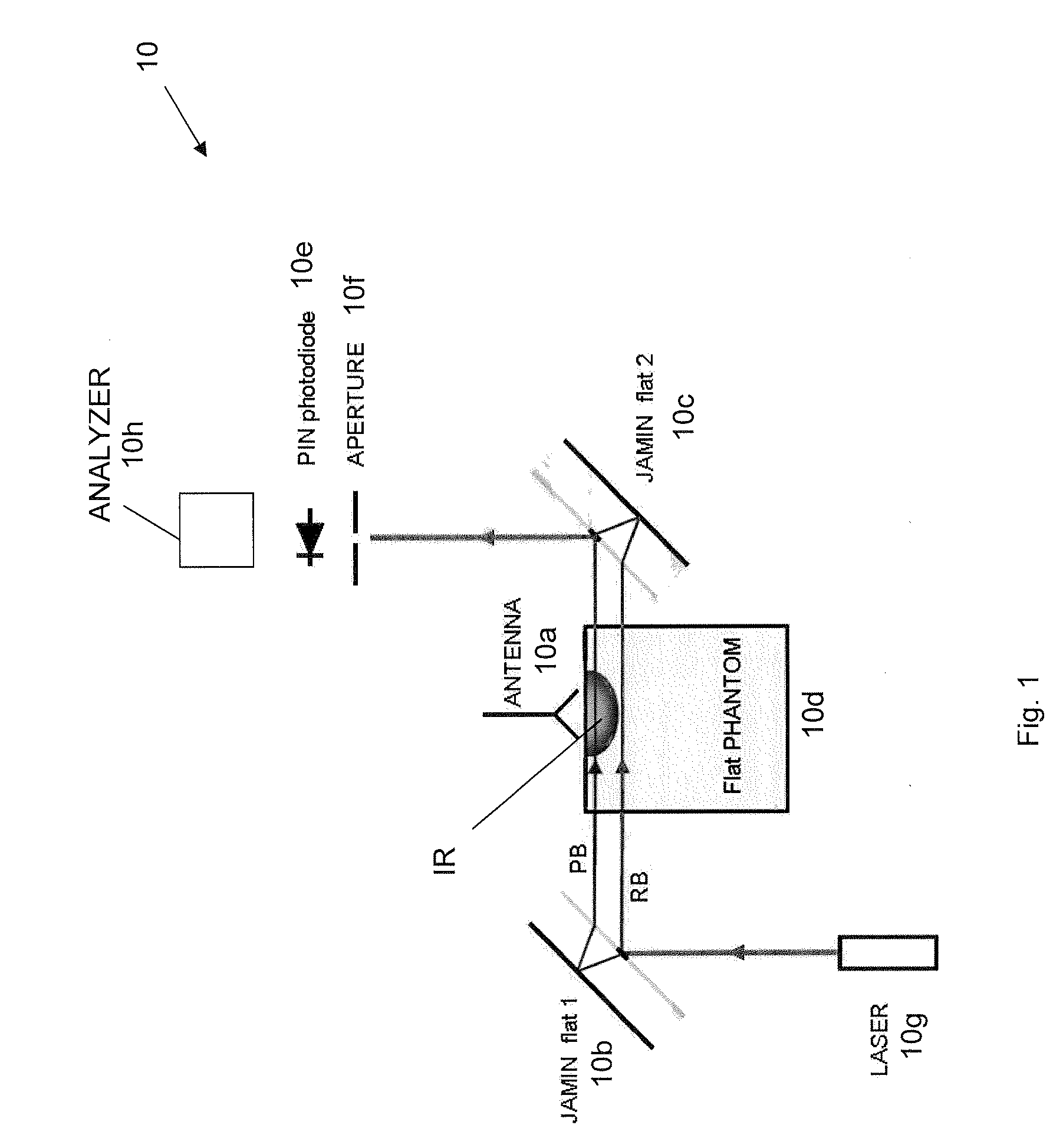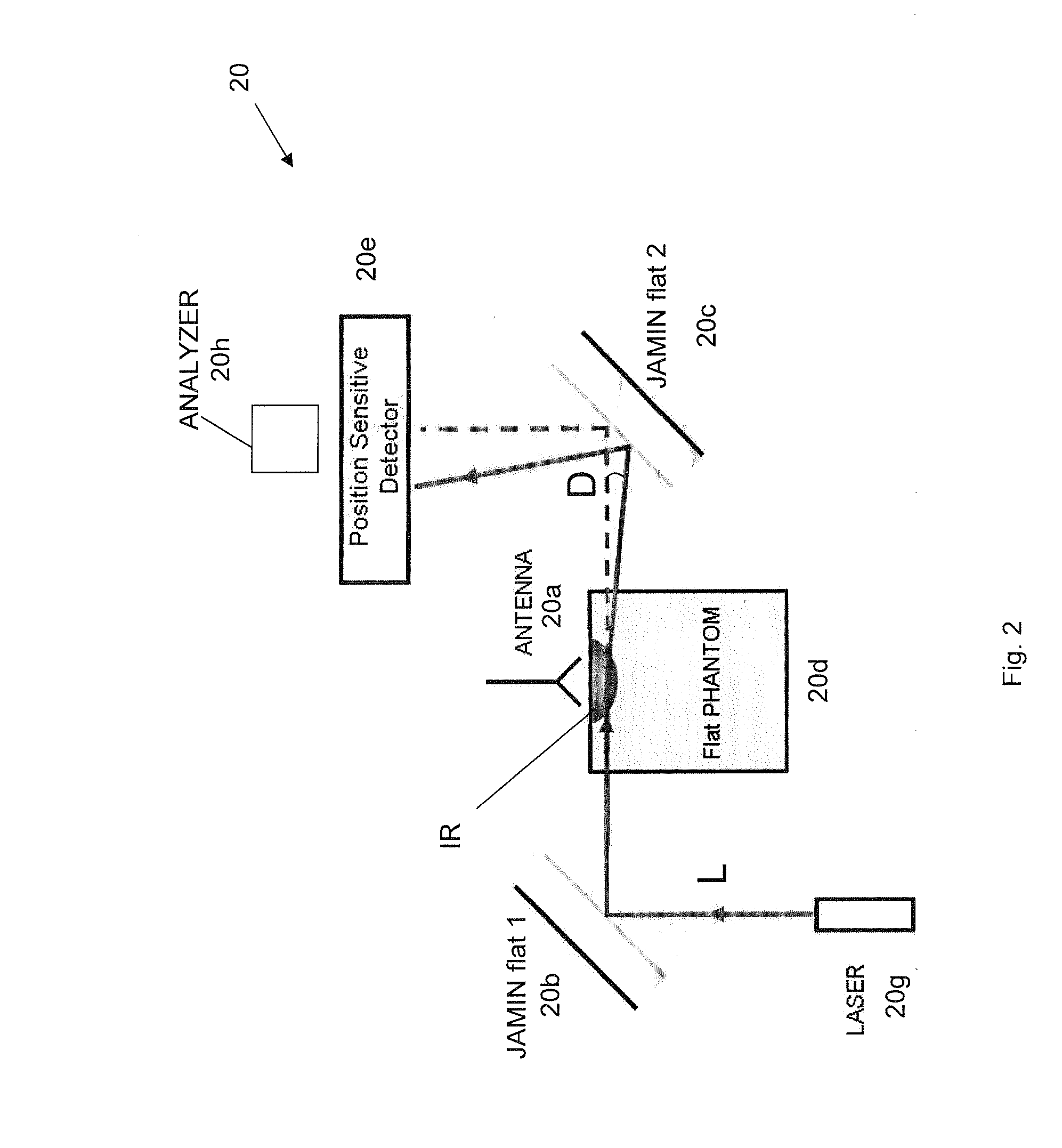Fast SAR assessment and certification system for wireless device certification
a wireless device and certification system technology, applied in measurement devices, instruments, scientific instruments, etc., can solve the problems of inability to predict the resulting sar profile from design changes, the sar profile of a particular device can depend on unexpectedly and effectively, and the sar profile of a particular device cannot be easily and accurately predicted computationally. , the problem of large computational cost and large limitations
- Summary
- Abstract
- Description
- Claims
- Application Information
AI Technical Summary
Benefits of technology
Problems solved by technology
Method used
Image
Examples
examples
The following results using variations of the systems described herein demonstrate the use of two complementary optical methods to provide detection of the SAR temperature distribution in various phantoms, in accordance with aspects of the present invention. Either of the techniques may be used independently, or both may be used in tandem. Suitable implementations include their use in an instrument for fast SAR compliance assessment. The examples below demonstrate measurements from the SAR limit of 22.8 mK / min (corresponding to 1.6 W / kg) and above and down to 1.4 mK / min (0.07 W / kg). The results obtained are repeatable to the order of 10% or better. Best results are currently observed within the first minute of exposure time, although measurement time can be shortened or lengthened as needed.
As shown in the results described further below, the system 100 of FIG. 3 was tested at 900 and 1800 MHz. It is to be understood, however, that the system may work at even higher frequencies with...
PUM
| Property | Measurement | Unit |
|---|---|---|
| power | aaaaa | aaaaa |
| frequencies | aaaaa | aaaaa |
| frequencies | aaaaa | aaaaa |
Abstract
Description
Claims
Application Information
 Login to View More
Login to View More - R&D
- Intellectual Property
- Life Sciences
- Materials
- Tech Scout
- Unparalleled Data Quality
- Higher Quality Content
- 60% Fewer Hallucinations
Browse by: Latest US Patents, China's latest patents, Technical Efficacy Thesaurus, Application Domain, Technology Topic, Popular Technical Reports.
© 2025 PatSnap. All rights reserved.Legal|Privacy policy|Modern Slavery Act Transparency Statement|Sitemap|About US| Contact US: help@patsnap.com



